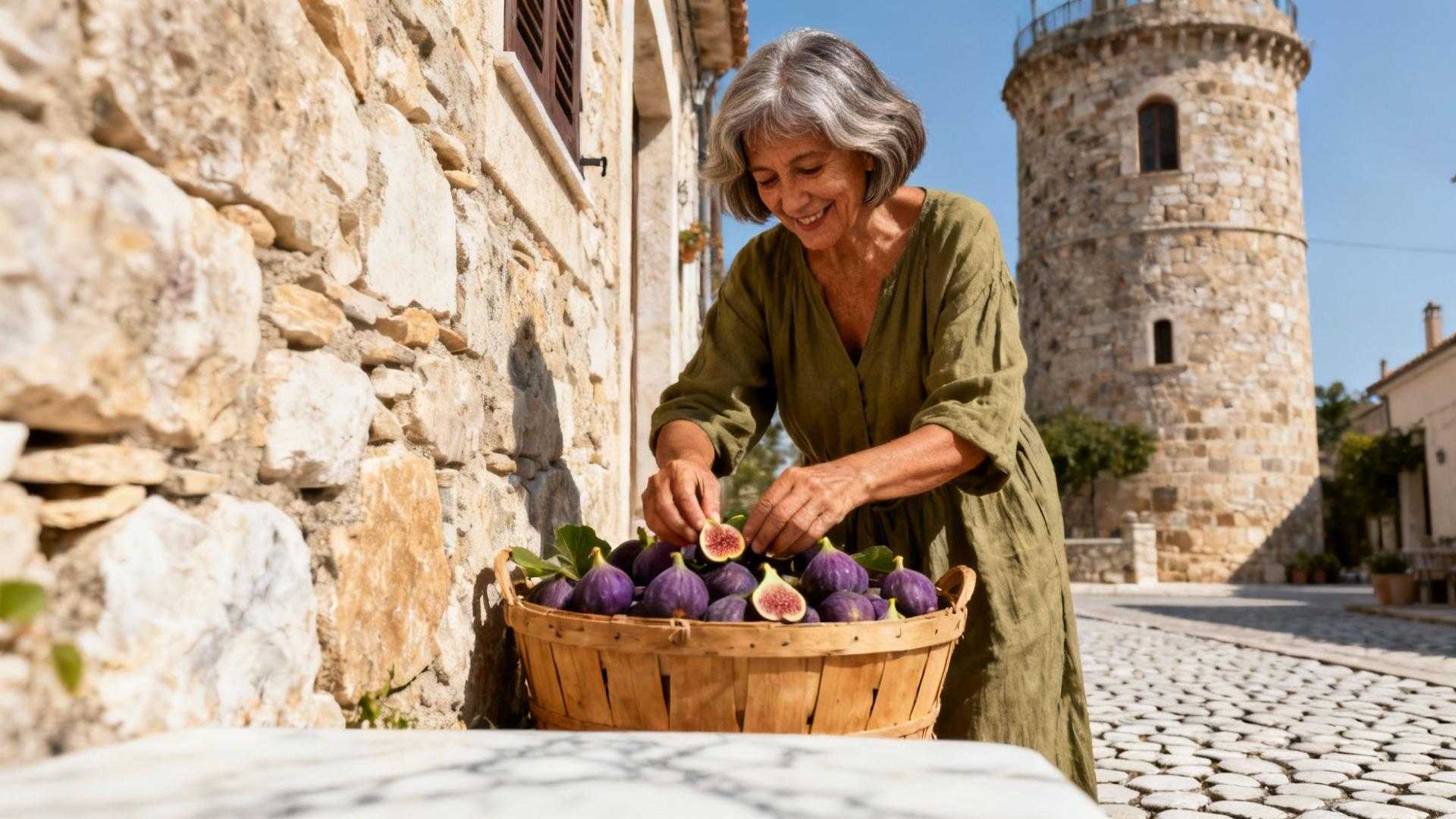Dawn breaks over Apiranthos village where marble cobblestones glow rose-gold under morning light. An elderly woman arranges fresh figs outside a stone tower house while her neighbor’s cat stretches across Byzantine church steps. This is the Naxos tourists rushing to Santorini’s caldera never discover: mountain villages where 8,000 years of Cycladic culture survives in daily rhythms, not museum displays.
The Village Where Marble Speaks Louder Than Crowds
At 650 meters elevation, Apiranthos perches among Naxos mountains like a marble crown. Stone tower houses cast shadows across narrow pathways worn smooth by centuries of footsteps. The village’s 722 residents preserve traditions tourists never witness in coastal resorts.
Morning light reveals what makes Apiranthos extraordinary: 70% of village streets are marble-paved. Local craftsmen still carve using techniques unchanged since ancient times. Four small museums house archaeological treasures, but the real discovery happens in village squares where elders speak a Cretan-influenced dialect.
Unlike Santorini’s crowds of 2.2 million annual visitors, Apiranthos receives just 150 tourists daily in October. The difference transforms every interaction from transaction to genuine hospitality. The neighboring Cycladic capitals maintain similar authenticity but with even fewer crowds.
What 478 Byzantine Churches Guard in Naxos’s Interior
Naxos holds 478 confirmed Byzantine churches and chapels, with 68% hidden in mountain villages. This concentration creates Europe’s most authentic Orthodox heritage experience. Village churches open only for locals, preserving sacred traditions tourists rarely witness.
Marble Workshops Still Carving Since Ancient Times
Three active marble workshops operate in Apiranthos today, down from 15 during the 1950s. Master craftsman Dimitris Stavros, 78, teaches young apprentices techniques passed down through generations. His grandfather carved marble for Venetian nobles in the 1890s.
The Venetian Kastro’s Hidden Legacy
Nearby Halki village served as Naxos’s capital from the 13th to 17th centuries. Its 750 residents protect Venetian architecture including the Panagia Drosiani church, dating to the 6th century. Stone towers and arched doorways compose scenes from medieval Greece, unchanged for 400 years.
Where Locals Actually Eat: Beyond Santorini’s €45 Moussaka
Village tavernas serve authentic meals for €16 per person compared to €28.50 in coastal Chora. Quality surpasses tourist restaurants because locals demand perfection. Families gather nightly, creating atmosphere no resort can replicate.
Graviera Cheese Tastings in Mountain Villages
Giorgos’ Dairy in Halki sells Naxian graviera for €12.50 per kilogram. The same cheese costs €18.50 in Chora tourist shops. Visitors taste directly from producers, learning traditional aging methods in mountain caves. These authentic Cycladic islands preserve similar artisanal traditions.
The Kopania Ritual No Guidebook Mentions
Drosiani Bakery has operated since 1923, crafting kopania fig-sesame sweets using ancestral recipes. Owner Maria serves them for €3.50 per portion while Chora tourist shops charge €6.50. Three generations of women prepare these delicacies before dawn, continuing traditions their grandmothers taught them.
The Silence Santorini’s 2 Million Visitors Forgot
Standing in Halki’s empty plateia at noon, church bells echo off stone walls. Complete absence of selfie sticks and cruise ship groups reveals what Cycladic islands felt like before Instagram. This is travel as discovery, not documentation.
Village life continues unchanged despite tourism pressures. Children play in marble squares while grandparents discuss local affairs. Similar authentic villages across Europe resist commercialization through deliberate protection of traditional life.
Your Questions About Naxos Answered
How much does accommodation actually cost compared to Santorini?
Naxos village guesthouses cost €38-42 per night in October 2024. Santorini averages €320-450 for comparable quality. Mountain villages offer 85% savings while providing more authentic experiences than commercialized resorts.
What makes Naxian villages special compared to other Greek islands?
Naxos receives 450,000 annual visitors compared to Santorini’s 2.2 million and Mykonos’s 1.8 million. Lower tourism pressure preserves authentic traditions. Local food traditions remain protected from mass commercialization.
Is Naxos really less crowded than famous Cycladic islands?
Santorini averages 18 cruise ships weekly carrying 2,500-5,000 passengers each. Naxos receives just 2 ships weekly. October brings 75% fewer tourists than August, creating perfect conditions for authentic cultural experiences in mountain villages.
The last ferry departs Naxos at sunset, its wake cutting through Aegean turquoise as Apiranthos’s marble streets cool under evening shadows. Up in the village, the tavli game continues at the kafeneio, unchanged, unrushed.
